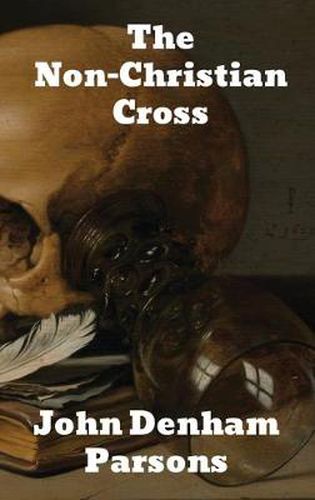Readings Newsletter
Become a Readings Member to make your shopping experience even easier.
Sign in or sign up for free!
You’re not far away from qualifying for FREE standard shipping within Australia
You’ve qualified for FREE standard shipping within Australia
The cart is loading…






This title is printed to order. This book may have been self-published. If so, we cannot guarantee the quality of the content. In the main most books will have gone through the editing process however some may not. We therefore suggest that you be aware of this before ordering this book. If in doubt check either the author or publisher’s details as we are unable to accept any returns unless they are faulty. Please contact us if you have any questions.
The Non-Christian Cross-An Enquiry into the Origin and History of the Symbol Eventually Adopted as That of Our Religion is a classic religious studies text by John Denham Parsons. In the thousand and one works supplied for our information upon matters connected with the history of our race, we are told that Alexander the Great, Titus, and various Greek, Roman, and Oriental rulers of ancient days, crucified this or that person; or that they crucified so many at once, or during their reign. And the instrument of execution is called a cross.
This was, however, by no means necessarily the case.
For instance, the death spoken of, death by the _stauros_, included transfixion by a pointed stauros or stake, as well as affixion to an unpointed stauros or stake; and the latter punishment was not always that referred to.
It is also probable that in most of the many cases where we have no clue as to which kind of stauros was used, the cause of the condemned one’s death was transfixion by a pointed stauros.
Moreover, even if we could prove that this very common mode of capital punishment was in no case that referred to by the historians who lived in bygone ages, and that death was in each instance caused by affixion to, instead of transfixion by, a stauros, we should still have to prove that each stauros had a cross-bar before we could correctly describe the death caused by it as death by crucifixion.
$9.00 standard shipping within Australia
FREE standard shipping within Australia for orders over $100.00
Express & International shipping calculated at checkout
This title is printed to order. This book may have been self-published. If so, we cannot guarantee the quality of the content. In the main most books will have gone through the editing process however some may not. We therefore suggest that you be aware of this before ordering this book. If in doubt check either the author or publisher’s details as we are unable to accept any returns unless they are faulty. Please contact us if you have any questions.
The Non-Christian Cross-An Enquiry into the Origin and History of the Symbol Eventually Adopted as That of Our Religion is a classic religious studies text by John Denham Parsons. In the thousand and one works supplied for our information upon matters connected with the history of our race, we are told that Alexander the Great, Titus, and various Greek, Roman, and Oriental rulers of ancient days, crucified this or that person; or that they crucified so many at once, or during their reign. And the instrument of execution is called a cross.
This was, however, by no means necessarily the case.
For instance, the death spoken of, death by the _stauros_, included transfixion by a pointed stauros or stake, as well as affixion to an unpointed stauros or stake; and the latter punishment was not always that referred to.
It is also probable that in most of the many cases where we have no clue as to which kind of stauros was used, the cause of the condemned one’s death was transfixion by a pointed stauros.
Moreover, even if we could prove that this very common mode of capital punishment was in no case that referred to by the historians who lived in bygone ages, and that death was in each instance caused by affixion to, instead of transfixion by, a stauros, we should still have to prove that each stauros had a cross-bar before we could correctly describe the death caused by it as death by crucifixion.